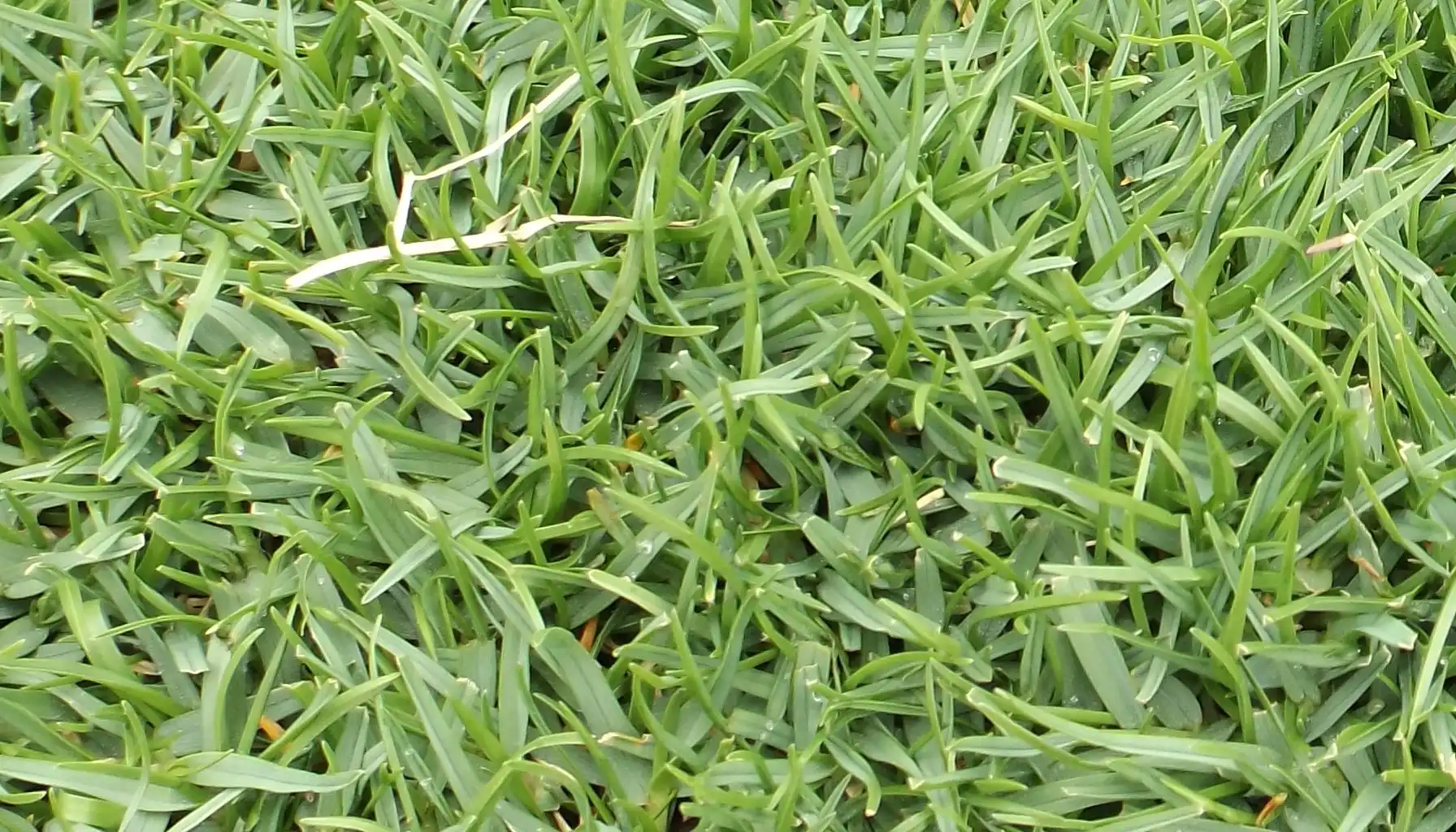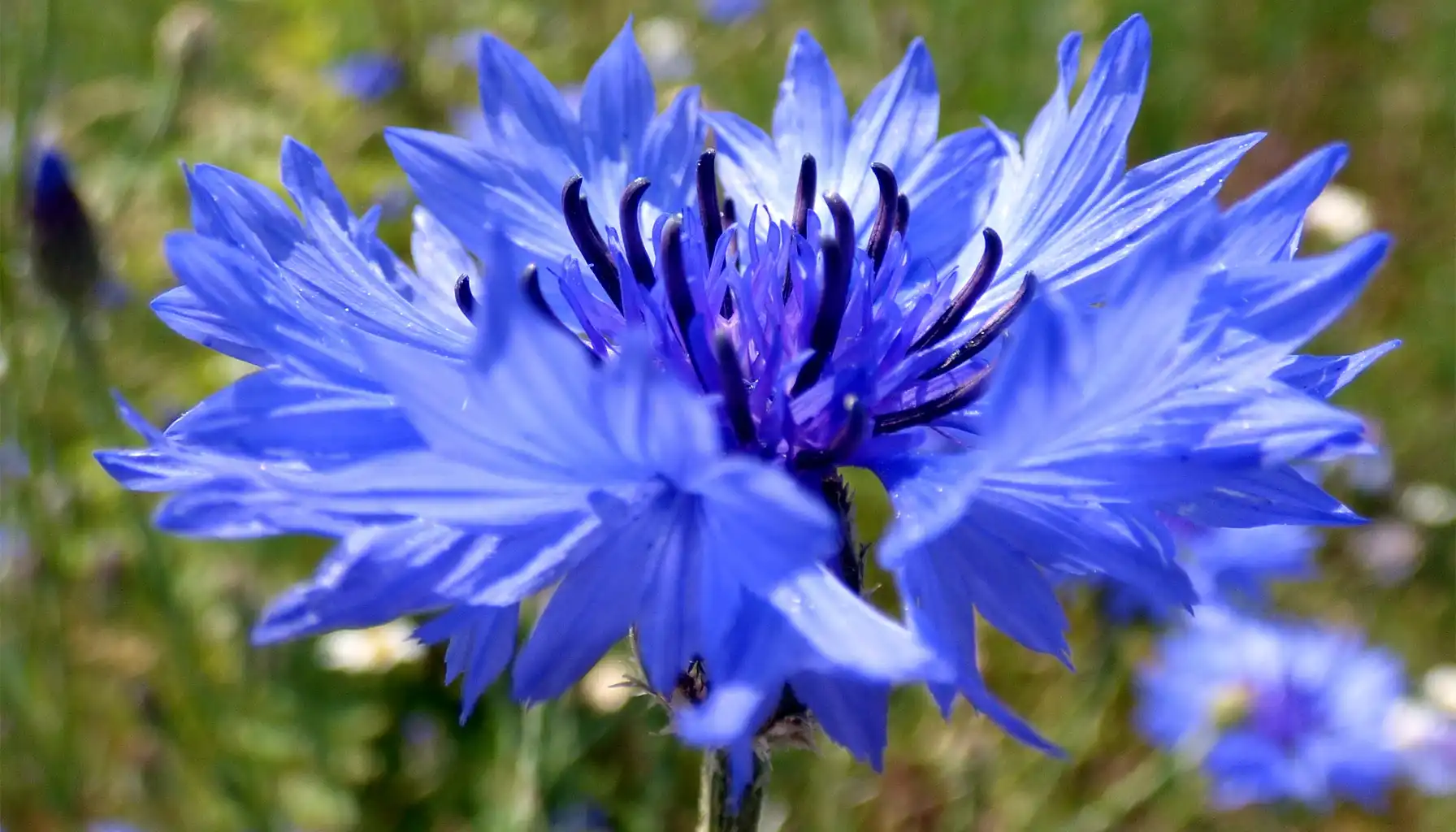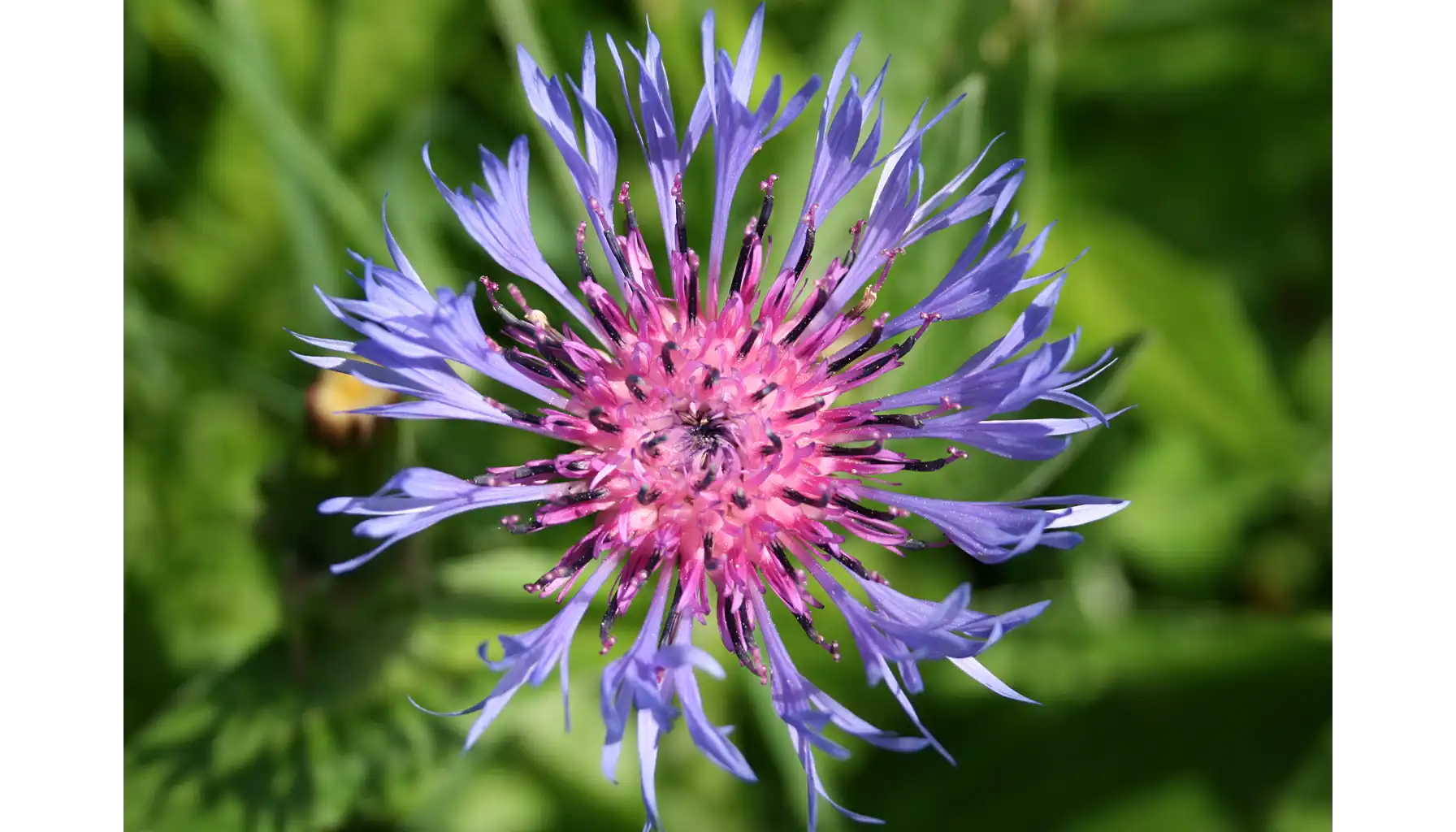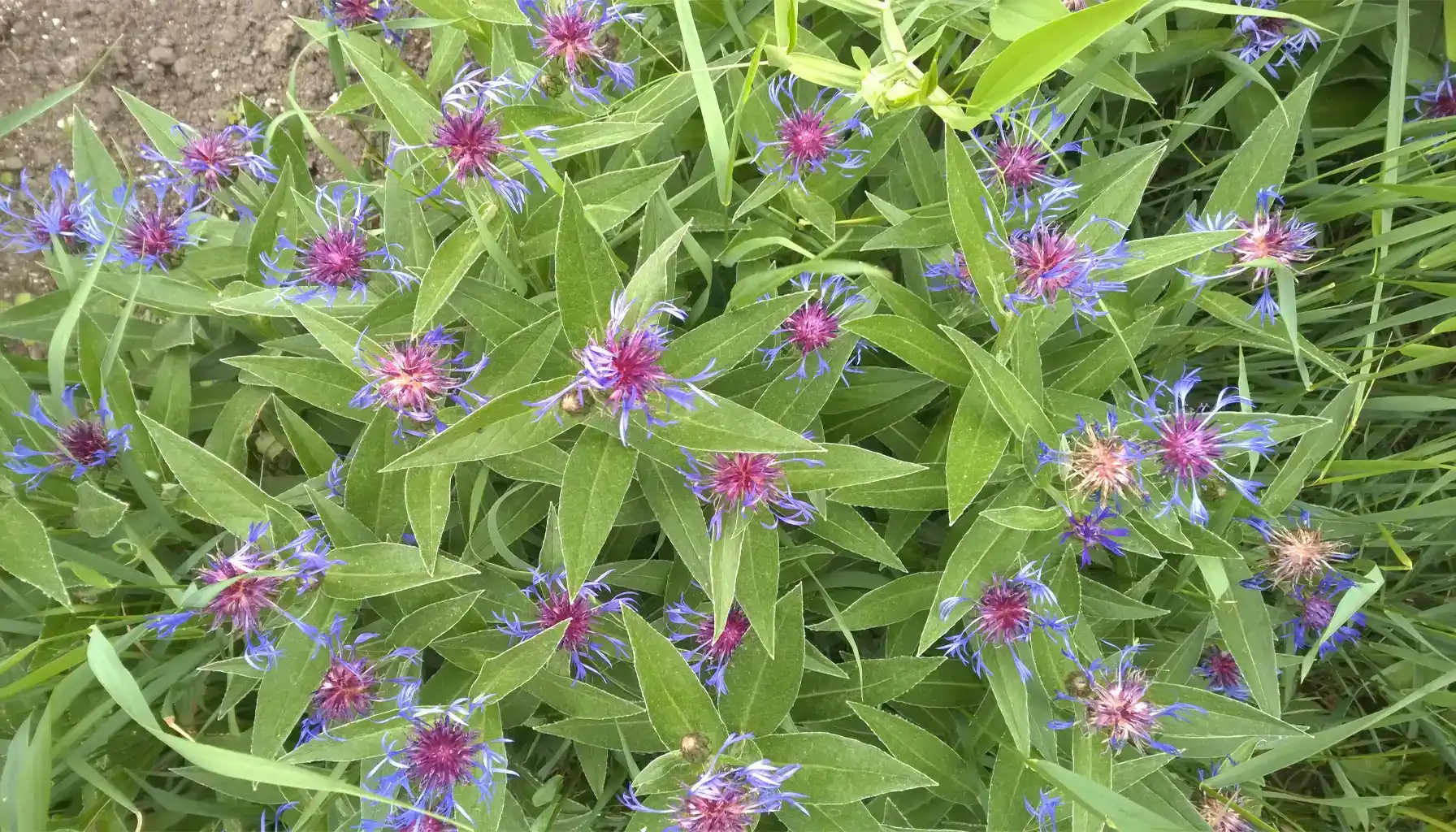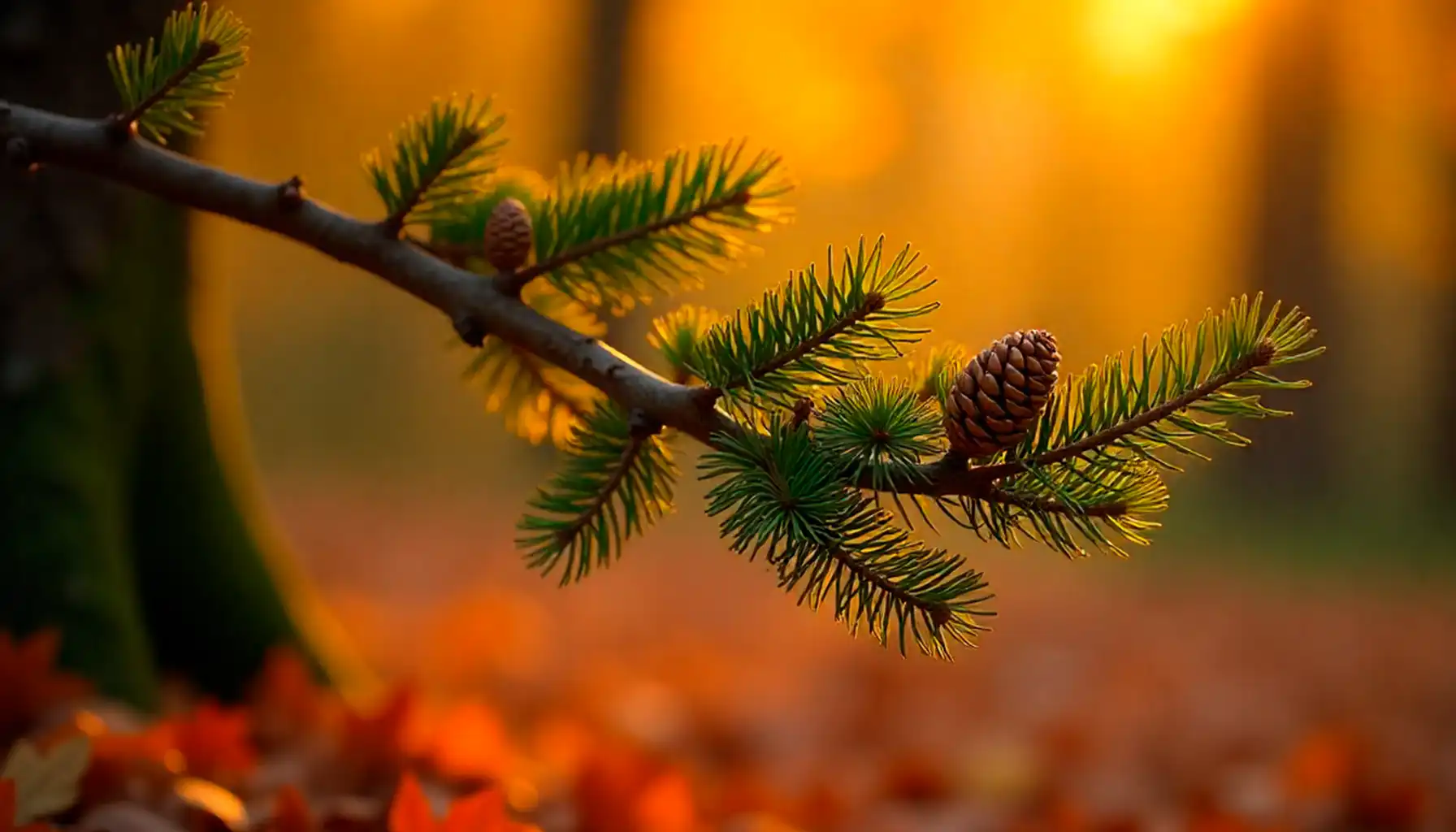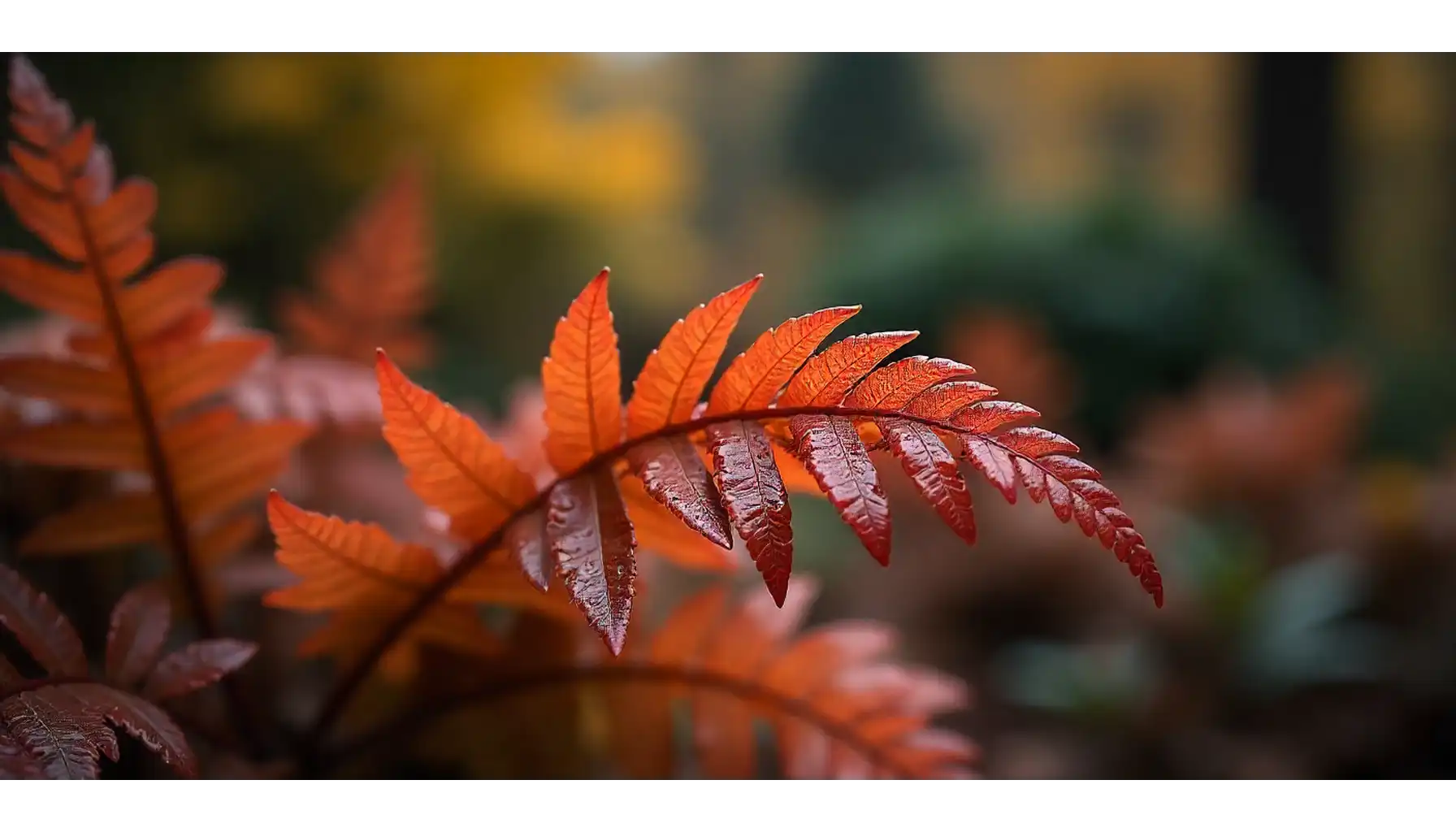The Bachelor’s Button or Cornflower is a flower with a long bloom period, easy growth and vibrant colors. Its beauty suits both wild meadows and home gardens. The Bachelor’s Button plant brings life to flower beds, cottage gardens, and even balcony pots, making it a versatile choice for decorators and gardeners alike. To discover the diversity of nature and decorate your garden – use the plant id app.
Flower ID
The Bachelor’s Button scientific name is Centaurea cyanus. It belongs to the Asteraceae family and originates from Europe and Western Asia. Over time, it spread worldwide through garden cultivation. It reaches from 8 inches to 3 feet tall. The flower’s native range includes sunny meadows and open fields where the soil drains well and sunlight reaches every part of the plant. The Bachelor’s Button Cornflower description highlights narrow gray-green leaves and compact flower heads that open on upright stems.
The petals form a rich display of color. Traditional blue remains the most famous tone, but hybrid forms offer white, purple, pink, and near-black shades.
Plant Type | Annual |
Bachelor’s Button Native Range | Europe |
Height | 8-39 in. tall |
Soil | Varies |
Spacing | Allow 8-12 inches in between plants |
Sun Exposure | Full sun |
Bloom Time | Summer |
Flower Color | Pink, purple, white, multicolor |
Leaves | 1-4 in. long |
Feature | Attracts butterflies |
History Facts
People in ancient Greece and Rome valued the plant for its supposed healing power and used it in early herbal medicine.
In Germany, during the 19th and early 20th centuries, the Cornflower was a symbol of independence in the Kingdom of Prussia.
In the 19th century, artists and poets used the Bachelor’s Button meaning of pure feelings and rural beauty.
In France, serves as a symbol to honor World War I veterans.
Nowadays, Bachelor’s Button Centaurea cyanus is a symbol of nature.
Colors & Varieties
‘Florist Blue Boy’ – classic bright blue Cornflower.
‘Classic Romantic’ – white or pink; medium-sized plant with semidouble and double bicolor blossoms.
‘Classic Magic’ – a mix of lavender, white and purple flowers.
‘Black Button’ – dramatic deep burgundy-purple color.
‘Polka Dots Mix’ – a mix of various colors, including pinks and whites; diverse floral palette.
Several varieties of Bachelor’s Button flowers provide unique garden effects. The classic Bachelor’s Button Blue Boy remains the most recognized type with bright blue petals. Gardeners who prefer something softer select the bride Cornflower Bachelor’s Button with pure white blooms.
Deep colors appear in Bachelor’s Button Black Magic, which adds mystery to arrangements. The delicate lavender tones of amethyst dream Bachelor’s Button bring calm beauty to mixed borders, while amethyst in snow Bachelor’s Button displays white petals with purple centers.
Each color variety maintains the plant’s signature shape and long-lasting quality. Two simple approaches exist for plant identification: the traditional method and AI-based assistance. By combining several kinds, you can achieve a dynamic color palette that evolves throughout the growing season.
Growing Guide
To grow this plant successfully, start with Bachelor’s Button seeds. Sow them directly outdoors in early spring when the ground becomes workable. The seed prefers cool weather to germinate properly. Place it half an inch deep in well-drained soil under full sun.
Within ten to fourteen days, a Bachelor’s Button seedling will appear. Keep the soil lightly moist during early growth, but avoid overwatering. Once seedlings reach two inches, thin them to six to eight inches apart to allow proper airflow.
Quality soil and open locations often achieve the best results. Regular watering during the first month strengthens root development and leads to steady flowering later.
Growth Stages
Seed Sowing: Plant directly to start growth during cool weather.
Seedling: Thin plants to 6 inches to prevent overcrowding.
Vegetative: Maintain sunlight and moisture to support leaf and root strength.
Budding: Reduce watering slightly to encourage flower formation.
Blooming: Remove old flowers to extend the blooming period.
Growth Seasonal Table
Season | Recommendation | Result |
Spring | Sow seeds and water regularly | Strong early growth |
Summer | Feed every four weeks | Continuous flowering |
Fall | Collect seeds and prune stalks | Renew stock for next season |
Winter | Protect soil from erosion | Prepare for next planting |
Planting Conditions
When planning where to place Bachelor’s Button plants, choose sunny spots with moderate fertility and good drainage. The plant dislikes soggy ground or excessive shade. Loose sandy loam suits it best. Water the soil lightly once a week during dry weather. In rare cases, watering with sugar may be used as an emergency energy boost. If rainfall remains steady, extra watering becomes unnecessary. The plant thrives in slightly alkaline soil with pH near 7.0.
In containers, wide pots provide enough root space and promote upright stems. For outdoor beds, spacing of 10 to 12 inches ensures proper airflow. Tall types may need simple stakes for support when exposed to wind.
Flower Care & Maintenance
Strong care keeps blooms healthy throughout the season. Apply balanced fertilizer once every four weeks to maintain color intensity. Use Bachelor’s Button availability food rich in phosphorus to promote more flower heads. Remove faded flowers regularly to extend the bloom period. Watch for aphids or powdery mildew, and treat affected areas promptly with organic solutions.
The Bachelor’s Button leaves appear narrow, gray-green, and slightly hairy. They line the stems alternately, creating a fine texture that balances the bold flower heads. The plant stands upright and forms rounded clumps with age. Consistent pruning after flowering helps maintain neat shape and prevents unwanted self-seeding. Mature plants may reach two to three feet in height with equal spread.
Flower Uses
Cut flowers last long in vases. The Bachelor’s Button vase life extends up to seven days with fresh water and cool storage. The sturdy stems and consistent color make the flower popular for both home decoration and floral arrangements. The Cornflower, Bachelor’s Button flower meaning often connects with purity, loyalty, and remembrance. Artists and poets have admired it for centuries, linking it with calm devotion and simple beauty.
The Classic Romantic Bachelor’s Button colors capture that timeless charm. Each bloom carries a natural elegance that enhances both rustic and formal spaces. In folklore, a single cornflower worn on clothing once symbolized love and hope.
Medicine: It contains a wide range of pharmacologically active compounds. The flower head finds application in herbal medicine and in the treatment of minor ocular inflammations. For pharmacological purposes use leaves and seeds.
Culinary: The Bachelor’s Button edible nature adds practical value. Petals appear as decorations for cakes,salads and drinks. Herbalists also mention Bachelor’s Button tea benefits, describing a mild flavor that supports relaxation and digestion.
Pigment: The blue color of Centaurea cyanus is due to protocyanin, an anthocyanin pigment that is also found in Roses. Different anthocyanins derived from People use Centaurea cyanus as natural additives in food products, such as yoghurts.
Phytoremediation: Centaurea cyanus has been evaluated for phytoremediation of soils contaminated with lead.
Culture: Corning Glass Works used a Blue Cornflower for the initial release of Corning Ware Pyroceram cookware. Its popularity in the United States, Canada, United Kingdom and Australia was so high.
This plant became a source of inspiration for artists like Vincent Van Gogh, Isaac Levitan and Igor Grabar.
FAQ
Is the Bachelor’s Button toxic to dogs?
No. In contrast to other toxic plants, this one poses no harm to dogs or other domestic animals. It remains one of the safest flowering species for home gardens.
How wide do these plants grow?
Depending on soil and sunlight, width usually reaches twelve to eighteen inches. Regular trimming maintains compact size and neat structure.
What does an average Bachelor’s Button plant look like?
It grows upright with thin gray-green leaves and a rounded top covered in colorful blooms. The shape resembles a small, delicate bush.
Can you grow it indoors?
While possible, indoor light levels must stay strong. Outdoor growth produces more flowers and natural forms.
Related AI Plant Finder Posts
